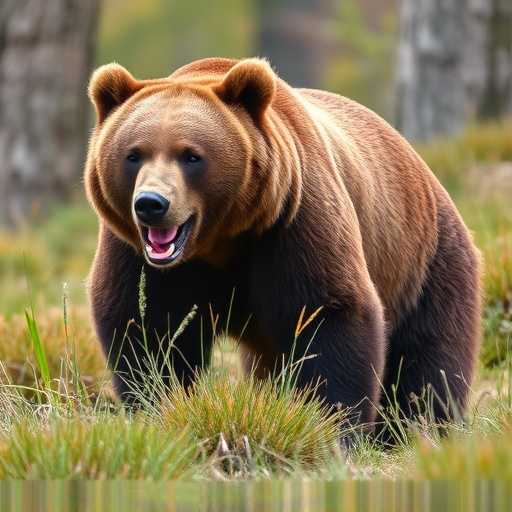Understanding the bear spray cloud dispersal range (20-30 feet or 6-9 meters) is vital for effective wildlife safety in bear country. Key factors like wind speed, terrain, and humidity impact its reach. Open spaces allow mist to travel farther, while dense forests may limit effectiveness. Proper application techniques, including aiming for eyes, nose, and mouth, are crucial during encounters. Safety practices include maintaining distance, correct carrying, and deployment during bear encounters.
“Discover the power of bear spray as a vital tool in wilderness safety. This comprehensive guide explores the fascinating dynamics of bear spray cloud dispersal range, uncovering factors that influence its effectiveness. From understanding the science behind the spray’s dispersion to identifying optimal use cases and safety considerations, we demystify this powerful deterrent. Learn how environmental conditions and application techniques impact bear spray range, ensuring you’re equipped with knowledge for responsible outdoor exploration.”
- Understanding Bear Spray Cloud Dispersal
- Factors Affecting Range and Efficacy
- Optimal Use Cases for Bear Spray
- Safety Considerations and Best Practices
Understanding Bear Spray Cloud Dispersal
Bear spray is an effective deterrent for unexpected bear encounters in the wild, but understanding its cloud dispersal range is key to ensuring safety. When bears are sprayed, the product creates a disorienting aerosol mist that can reach up to 30 feet (9 meters) in ideal conditions. This cloud of bear spray not only reaches the bear’s eyes and nose but also lingers in the air, potentially affecting other animals and even humans in nearby areas.
The range of bear spray cloud dispersal depends on various factors, including wind speed and direction, terrain, and humidity levels. In open spaces with little obstruction, the mist can travel farther, increasing the area of protection. However, in dense forests or rugged terrain, the spray may dissipate more quickly due to obstructions and varying air currents, reducing its effective range. Therefore, it’s crucial for individuals in bear country to be aware of their surroundings and follow recommended application techniques when using bear spray as a safety measure.
Factors Affecting Range and Efficacy
The effectiveness of bear spray as a deterrent is influenced by several key factors, primarily related to the spray’s cloud dispersal range and the conditions in which it’s used. The range of a bear spray cloud can vary significantly depending on the type of spray, the user’s skill, terrain, and weather. Typically, bear sprays are designed to create a defensive barrier by releasing a dense cloud of irritants at close to intermediate ranges—often between 20 to 30 feet (6 to 9 meters). However, factors like wind direction and speed can significantly impact this range, causing the spray to dissipate more quickly or spread further.
Additionally, environmental conditions such as humidity and temperature play a role in the spray’s persistence. In humid environments, the solvent in the spray may evaporate faster, reducing its effectiveness. Conversely, colder temperatures can cause the spray to freeze, impacting its ability to reach and irritate the target. Understanding these variables is crucial for users to maximize the deterrent effect of bear spray during outdoor activities in bear country.
Optimal Use Cases for Bear Spray
When it comes to optimal use cases for bear spray, understanding its cloud dispersal range is key. Bear spray is most effective when used in close proximity to potential threats, typically within the recommended 20-30 foot (6-9 meter) range. This range ensures that the spray forms a dense cloud of irritants, quickly obscuring the bear’s vision and sense of smell, providing a critical window of opportunity for escape or de-escalation.
For backcountry hikers, campers, and hunters, bear spray is an indispensable tool when navigating areas known for bear activity. Its quick dissemination range makes it ideal for sudden encounters, allowing users to create a protective barrier without needing to aim directly at the bear. Proper training on how to deploy bear spray effectively during such encounters can significantly enhance safety in bear country.
Safety Considerations and Best Practices
When considering bear spray as a deterrent, safety should always be the top priority. It’s crucial to understand that while bear spray is an effective tool for deterring bears, it’s not foolproof. The cloud dispersal range varies based on factors like wind speed and direction, terrain, and the number of bears present. Always stay alert and maintain a safe distance from bears, even when using bear spray.
Best practices include keeping a safe distance from bears at all times, carrying bear spray appropriately (within reach but not obstructing your view), and knowing how to deploy it effectively. If you encounter a bear, make yourself appear larger by raising your arms or jacket, speak firmly, and slowly back away while spraying the bear directly in the face and towards its chest. Ensure the spray reaches the bear’s eyes, nose, and mouth for maximum impact.
Bear spray is an effective deterrent, but understanding its cloud dispersal range and optimal use cases is key. Factors like wind, terrain, and distance can significantly impact efficacy. By knowing how to deploy bear spray properly, users can enhance their safety in grizzly country. Always follow best practices and stay informed about local guidelines for maximum protection.
